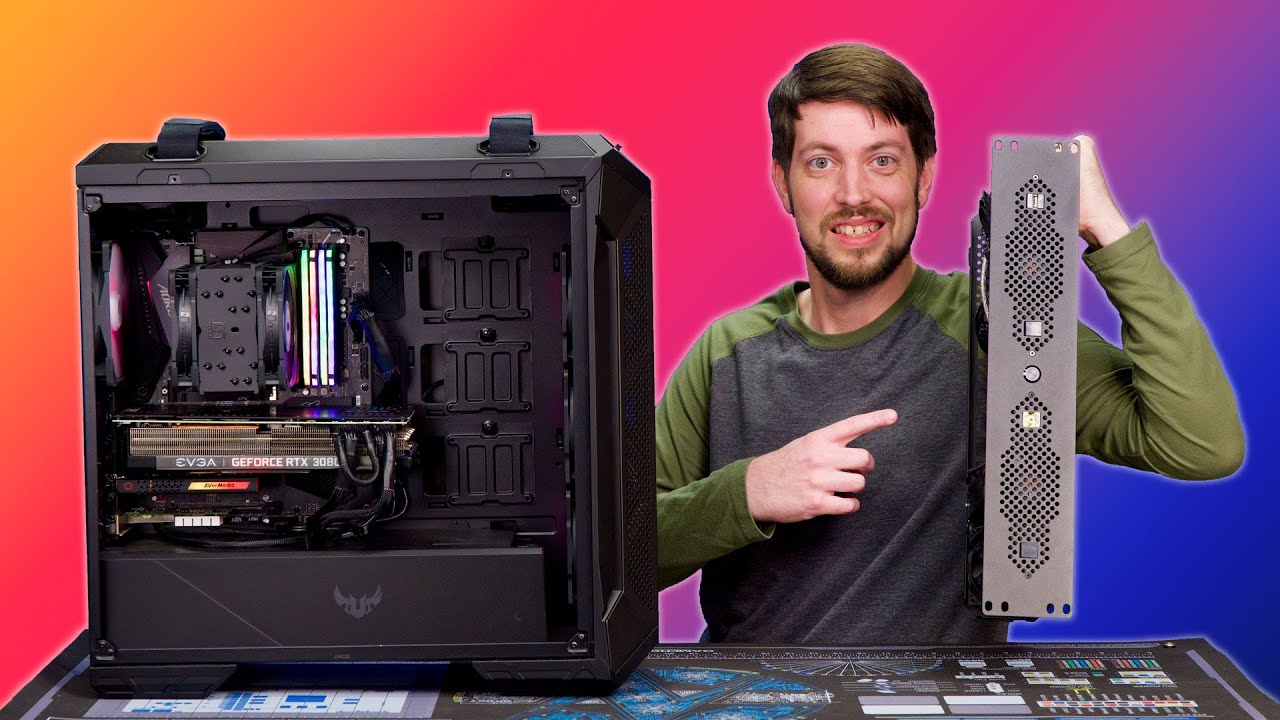Here’s the thing about asking investors for money: they want to see returns.
Technology
OpenAI was a research lab — now it’s just another tech company

OpenAI launched with a famously altruistic mission: to help humanity by developing artificial general intelligence. But along the way, it became one of the best-funded companies in Silicon Valley. Now, the tension between those two facts is coming to a head.
Weeks after releasing a new model it claims can “reason,” OpenAI is barreling toward dropping its nonprofit status, some of its most senior employees are leaving, and CEO Sam Altman — who was once briefly ousted over apparent trust concerns — is solidifying his position as one of the most powerful people in tech.
On Wednesday, OpenAI’s longtime chief technology officer, Mira Murati, announced she’s leaving “to create the time and space to do my own exploration.” The same day, chief research officer Bob McGrew and VP of post training Barret Zoph said they would depart as well. Altman called the leadership changes “a natural part of companies” in an X post following Murati’s announcement.
“I obviously won’t pretend it’s natural for this one to be so abrupt, but we are not a normal company,” Altman wrote.
But it follows a trend of departures that’s been building over the past year, following the failed attempt by the board to fire Altman. OpenAI cofounder and chief scientist Ilya Sutskever, who delivered Altman the news of his firing before publicly walking back his criticism, left OpenAI in May. Jan Leike, a key OpenAI researcher, quit just days later, saying that “safety culture and processes have taken a backseat to shiny products.” Nearly all OpenAI board members at the time of the ouster, except Quora CEO Adam D’Angelo, have resigned, and Altman secured a seat.
The company that once fired Altman for being “not consistently candid in his communication” has since been reshaped by him.
No longer just a “donation”
OpenAI started as a nonprofit lab and later grew a for-profit subsidiary, OpenAI LP. The for-profit arm can raise funds to build artificial general intelligence (AGI), but the nonprofit’s mission is to ensure AGI benefits humanity.
In a bright pink box on a webpage about OpenAI’s board structure, the company emphasizes that “it would be wise” to view any investment in OpenAI “in the spirit of a donation” and that investors could “not see any return.”
Investor profits are capped at 100x, with excess returns supporting the nonprofit to prioritize societal benefits over financial gain. And if the for-profit side strays from that mission, the nonprofit side can intervene.
We’re way past the “spirit of a donation” here
Reports claim OpenAI is now approaching a $150 billion valuation — about 37.5 times its reported revenue — with no path toward profitability in sight. It’s looking to raise funds from the likes of Thrive, Apple, and an investment firm backed by the United Arab Emirates, with a minimum investment of a quarter-million dollars.
OpenAI doesn’t have deep pockets or existing established businesses like Google or Meta, which are both building competing models (though it’s worth noting that these are public companies with their own responsibilities to Wall Street.) Fellow AI startup Anthropic, which was founded by former OpenAI researchers, is nipping at OpenAI’s heels while looking to raise new funds at a $40 billion valuation. We’re way past the “spirit of a donation” here.
OpenAI’s “for-profit managed by a non-profit” structure puts it at a moneygrubbing disadvantage. So it made perfect sense that Altman told employees earlier this month that OpenAI would restructure as a for-profit company next year. This week, Bloomberg reported that the company is considering becoming a public benefit corporation (like Anthropic) and that investors are planning to give Altman a 7 percent stake. (Altman almost immediately denied this in a staff meeting, calling it “ludicrous.”)
And crucially, in the course of these changes, OpenAI’s nonprofit parent would reportedly lose control. Only a few weeks after this news was reported, Murati and company were out.
Both Altman and Murati claim that the timing is only coincidental and that the CTO is just looking to leave while the company is on the “upswing.” Murati (through representatives) declined to speak to The Verge about the sudden move. Wojciech Zaremba, one of the last remaining OpenAI cofounders, compared the departures to “the hardships parents faced in the Middle Ages when 6 out of 8 children would die.”
Whatever the reason, this marks an almost total turnover of OpenAI leadership since last year. Besides Altman himself, the last remaining member seen on a September 2023 Wired cover is president and cofounder Greg Brockman, who backed Altman during the coup. But even he’s been on a personal leave of absence since August and isn’t expected to return until next year. The same month he took leave, another cofounder and key leader, John Schulman, left to work for Anthropic.
When reached for comment, OpenAI spokesperson Lindsay McCallum Rémy pointed The Verge to previous comments made to CNBC.
And no longer just a “research lab”
As Leike hinted at with his goodbye message to OpenAI about “shiny products,” turning the research lab into a for-profit company puts many of its long-term employees in an awkward spot. Many likely joined to focus on AI research, not to build and sell products. And while OpenAI is still a nonprofit, it’s not hard to guess how a profit-focused version would work.
Research labs work on longer timelines than companies chasing revenue. They can delay product releases when necessary, with less pressure to launch quickly and scale up. Perhaps most importantly, they can be more conservative about safety.
There’s already evidence OpenAI is focusing on fast launches over cautious ones: a source told The Washington Post in July that the company threw a launch party for GPT-4o “prior to knowing if it was safe to launch.” The Wall Street Journal reported on Friday that the safety staffers worked 20-hour days and didn’t have time to double-check their work. The initial results of tests showed GPT-4o wasn’t safe enough to deploy, but it was deployed anyway.
Meanwhile, OpenAI researchers are continuing to work on building what they consider to be the next steps toward human-level artificial intelligence. o1, OpenAI’s first “reasoning” model, is the beginning of a new series that the company hopes will power intelligent automated “agents.” The company is consistently rolling out features just ahead of competitors — this week, it launched Advanced Voice Mode for all users just days before Meta announced a similar product at Connect.
So, what is OpenAI becoming? All signs point to a conventional tech company under the control of one powerful executive — exactly the structure it was built to avoid.
“I think this will be hopefully a great transition for everyone involved and I hope OpenAI will be stronger for it, as we are for all of our transitions,” Altman said onstage at Italian Tech Week just after Murati’s departure was announced.
Technology
Artificial flavours released by cooking aim to improve lab-grown meat


Cultured meat, with added flavour
Yonsei University
Lab-grown meat could get a flavour boost thanks to aromatic chemicals that activate when cooked, releasing a meaty smell – or if you prefer, that of coffee or potatoes.
Meat grown from cultured cells can already be created in various forms that resemble slaughtered meat, including steak and meatballs, but matching the taste has proven more challenging. Traditional meat flavours are extremely complex and volatile and don’t survive the lengthy laboratory process.
One key component of the taste of cooked meat is the Maillard reaction, named after a French chemist who discovered that unique flavours are created in cooked food at between 140 and 165°C (280 to 330 °F). Jinkee Hong at Yonsei University in Seoul, South Korea, and his colleagues say they have worked out a way to simulate the Maillard reaction by adding “switchable flavour compounds” (SFCs) into a 3D gelatine-based hydrogel, called a scaffold, that remain stable while the meat is cultured.
Once heated to 150°C, the chemicals “switch on” and release their flavours, improving the cultured protein’s palatability. “We actually smelled the meaty flavour upon heating the SFCs,” says Hong, though he wouldn’t confirm whether the team had actually eaten the meat.
These SFCs can also be used to create different flavour profiles. For example, the researchers tested three compounds and say they produced flavours simulating roasted meat, coffee, roasted nuts, onions and potatoes. “We can diversify and customise the flavour compounds released from the SFC,” says Hong.
One big issue is that the chemicals involved aren’t currently seen as safe for human consumption. “Because the materials and culture medium are not approved as edible materials, we cannot ensure the safety of it,” Hong says. “However, we think that our strategy can also be applied to conventional edible materials, which would be safer than the materials used in this study.”
Johannes le Coutre at the University of New South Wales in Sydney, Australia, says he is sceptical of the work for numerous reasons, including that the flavour tests predominantly used an electronic nose to assess the chemicals being released, rather than human judgement of whether they smelled appetising.
“You cannot nourish human beings with this type of material,” says le Coutre. “While cell-based meat is a promising technology concept, this particular way of adding flavour will never provide safe and sustainable protein for low and middle-income communities that need food.”
Topics:
Servers computers
Cara Merakit Rack Server 42U Perforated Door

https://tokopedia.link/BOdpxiBQyib
WhatsApp wa/me8973379900
source
Technology
GTA V for PlayStation 5 is only $20 today — normally $40


Best Buy has cut the price of Grand Theft Auto V by 50% and if you don’t already own it, you really need to buy it right now.
Servers computers
Slimming down to 2U! SFF Rackmount Gaming PC

HUGE thanks to Micro Center for sponsoring this build! Here are links for their offer:
New Customer Exclusive – $25 Off ALL CPU’s: https://micro.center/yww
Shop Micro Center’s February BYO Deals: https://micro.center/fbi
Check out Micro Center’s Custom PC Builder: https://micro.center/b9o
Submit your build to Micro Center’s Build Showcase: https://micro.center/0jn
Parts used in this build (some links are affiliate links):
– MyElectronics’ 2U Mini ITX case: https://www.myelectronics.nl/us/19-inch-2u-mini-itx-case-short-depth.html
– Intel i5-13400 CPU: https://amzn.to/3K5bgJ1
– ASRock Z790M-ITX WiFi Motherboard: https://amzn.to/3YOnLwF
– CORSAIR Vengeance DDR5-5200 RAM with XMP: https://amzn.to/3lDqzi3
– LIAN LI SP 750 SFX PSU: https://amzn.to/3lGtUg4
– PNY Nvidia RTX A2000 12GB graphics card: https://amzn.to/3YobvmV
– be quiet! Pure Wings 80mm BL044 Case fans: https://amzn.to/3S23mCd
– Noctua NH-L9i-17xx Low-Profile CPU cooler: https://amzn.to/3EaWKMi
– 3.5mm Keystone Audio Jack: https://amzn.to/3YRPIUA
– Nanxudyj 3.5mm 1ft Audio Cable: https://amzn.to/3Ea26HD
– KIOXIA XG8 NVMe SSD: https://americas.kioxia.com/en-us/business/ssd/client-ssd/xg8.html
And here’s a link to the build from Micro Center (excluding the things I bought separate): https://www.microcenter.com/site/content/custom-pc-builder-intel.aspx?load=fe3f5ada-d5a2-4773-a2f3-28a25a21f8c5
Also mentioned in this video:
– LTT Personal Rig Update (Late 2021): https://www.youtube.com/watch?v=TgRXE9mUHJc
– LTT Heating my pool with computers: https://www.youtube.com/watch?v=4ozYlgOuYis
– It BROKE! LTT Screwdriver 6-month review: https://www.youtube.com/watch?v=uwoc6c4PMfU
Support me on Patreon: https://www.patreon.com/geerlingguy
Sponsor me on GitHub: https://github.com/sponsors/geerlingguy
Merch: https://redshirtjeff.com
2nd Channel: https://www.youtube.com/c/GeerlingEngineering
#Sponsored #MicroCenter #Homelab
Contents:
00:00 – Too much power?
00:48 – Short-depth 2U rackmount case
01:19 – Micro Center!
01:58 – SFF ask the expert
04:07 – Case closed… and opened!
05:08 – Assembling the motherboard
08:37 – I actually showed the thing!
09:00 – It’s coming together
10:35 – Front panel USB and a GPU to see
12:43 – It’s a lot heavier for its first boot
13:46 – No case is perfect
14:52 – Quieter AND faster!
15:34 – Gaming at 1080p
16:20 – Other SFF options and another build .
source
Technology
The US might blacklist the main iPhone SE 4 display supplier

Apple has been trying to reduce the production cost of its iPhones for some time now. To achieve this, they have tried to turn to alternative suppliers for certain key components, such as displays. However, a new move by the US government could put Apple’s plans in jeopardy. A US representative requested that display suppliers from China, such as BOE and Tianma, be blacklisted. BOE would be the main OLED display supplier of the iPhone SE 4.
BOE is a Chinese display supplier that works with multiple big brands in the smartphone industry. Apple has been in talks with the company to use its panels in iPhone devices. According to reports, BOE has failed Apple’s quality tests for high-end iPhone displays, but the Cupertino giant would commission them to produce the majority of the iPhone SE 4’s displays.
US representative suggests blacklisting display suppliers from China
Apple may have to reconsider its plans regarding the displays of the next budget iPhone following a request from John Moolenaar, the Chairman of the House Select Committee on the Chinese Communist Party. Moolenaar requests the addition of BOE to the US trade blacklist in a letter to Defense Secretary Lloyd Austin. The letter also mentions Tianma Microelectronics, another Chinese display supplier.
The representative cites national security concerns as the main reason for the BOE’s potential blacklisting. The letter cites Chinese suppliers’ outsized market share growth in the LCD and OLED segment thanks to Chinese government funding. These suppliers have gone from 1% of the global OLED market share in 2014 to more than 52% today. They have also taken over 72% of the LCD market. Chinese suppliers have reportedly taken advantage of government funding to sell displays at cost, affecting competitors.
Previous reports suggested that BOE would manufacture 70% of the iPhone SE 4’s displays. Samsung was among the companies vying to supply the component. However, the deal fell through because Apple was willing to pay too little per unit. Indeed, reports suggest that Apple requested BOE to reduce the specifications of the “display candidate” to secure a lower price. There are no details on which specs would be reduced to save costs. However, we can imagine things like maximum brightness or resorting to older OLED technologies.
LG would be another candidate for the iPhone SE 4’s OLED screens
According to reports, Apple has also negotiated with LG to supply the displays for the iPhone SE 4. Reports suggest that the company is seeking to pay a maximum price of $40 per unit. The iPhone SE 4 would hit the market in 2025 for a price of $499. The possibility of a BOE blacklisting would force Apple to turn to more expensive suppliers, potentially increasing the estimated price for the next-generation budget iPhone.
Technology
VR hit Walkabout Mini Golf is getting a mobile edition

Walkabout Mini Golf has been filled with players ever since it launched around the same time as the Meta Quest 2. Now the multiplayer mini-golf game is making the jump to iOS devices.
The developer Mighty Coconut is currently beta testing its mobile mini-golf game and plans to release a full version on the App Store on October 10.
The Pocket version may be on mobile devices but the miniature version of the mini-golf game isn’t straying away from its virtual interface. The iOS Walkabout game can be played in two different modes: “Touch-to-Putt” mode in which you use the touch screen to tap and drag your shot and “Swing-to-Putt” mode in which you hold your iPhone like a putter and take your swing the same way you would in the VR version.
Walkabout Mini Golf is one of the most popular multiplayer VR games for the Meta Quest series. The virtual mini-golf game has an extensive series of stylized courses including some based on movies, TV shows and games like Jim Henson’s Labyrinth, the puzzle game Myst and the animated clay characters Wallace & Gromit. Mighty Coconut also designed a golf course with the immersive art company Meow Wolf and a series of courses based on the works of Jules Verne.
-

 Womens Workouts4 days ago
Womens Workouts4 days ago3 Day Full Body Women’s Dumbbell Only Workout
-

 News5 days ago
News5 days agoOur millionaire neighbour blocks us from using public footpath & screams at us in street.. it’s like living in a WARZONE – WordupNews
-

 Technology1 week ago
Technology1 week agoWould-be reality TV contestants ‘not looking real’
-

 News1 week ago
News1 week agoYou’re a Hypocrite, And So Am I
-

 Sport1 week ago
Sport1 week agoJoshua vs Dubois: Chris Eubank Jr says ‘AJ’ could beat Tyson Fury and any other heavyweight in the world
-

 Science & Environment1 week ago
Science & Environment1 week agoITER: Is the world’s biggest fusion experiment dead after new delay to 2035?
-

 Science & Environment1 week ago
Science & Environment1 week agoMaxwell’s demon charges quantum batteries inside of a quantum computer
-

 Science & Environment1 week ago
Science & Environment1 week agoHow to wrap your mind around the real multiverse
-

 Science & Environment1 week ago
Science & Environment1 week agoSunlight-trapping device can generate temperatures over 1000°C
-

 Science & Environment1 week ago
Science & Environment1 week ago‘Running of the bulls’ festival crowds move like charged particles
-

 Science & Environment1 week ago
Science & Environment1 week agoLiquid crystals could improve quantum communication devices
-

 Science & Environment1 week ago
Science & Environment1 week agoPhysicists are grappling with their own reproducibility crisis
-

 Science & Environment1 week ago
Science & Environment1 week agoHyperelastic gel is one of the stretchiest materials known to science
-

 Science & Environment1 week ago
Science & Environment1 week agoHow to unsnarl a tangle of threads, according to physics
-

 Science & Environment1 week ago
Science & Environment1 week agoQuantum ‘supersolid’ matter stirred using magnets
-

 CryptoCurrency1 week ago
CryptoCurrency1 week agoCardano founder to meet Argentina president Javier Milei
-

 Science & Environment1 week ago
Science & Environment1 week agoCaroline Ellison aims to duck prison sentence for role in FTX collapse
-

 Science & Environment1 week ago
Science & Environment1 week agoWhy this is a golden age for life to thrive across the universe
-

 News1 week ago
News1 week agoIsrael strikes Lebanese targets as Hizbollah chief warns of ‘red lines’ crossed
-

 Womens Workouts7 days ago
Womens Workouts7 days agoBest Exercises if You Want to Build a Great Physique
-

 CryptoCurrency1 week ago
CryptoCurrency1 week agoDZ Bank partners with Boerse Stuttgart for crypto trading
-

 CryptoCurrency1 week ago
CryptoCurrency1 week agoEthereum is a 'contrarian bet' into 2025, says Bitwise exec
-

 Womens Workouts7 days ago
Womens Workouts7 days agoEverything a Beginner Needs to Know About Squatting
-

 Science & Environment5 days ago
Science & Environment5 days agoMeet the world's first female male model | 7.30
-

 Science & Environment1 week ago
Science & Environment1 week agoQuantum forces used to automatically assemble tiny device
-

 Science & Environment1 week ago
Science & Environment1 week agoNuclear fusion experiment overcomes two key operating hurdles
-

 CryptoCurrency1 week ago
CryptoCurrency1 week agoBitcoin miners steamrolled after electricity thefts, exchange ‘closure’ scam: Asia Express
-

 CryptoCurrency1 week ago
CryptoCurrency1 week agoDorsey’s ‘marketplace of algorithms’ could fix social media… so why hasn’t it?
-

 CryptoCurrency1 week ago
CryptoCurrency1 week agoRedStone integrates first oracle price feeds on TON blockchain
-

 CryptoCurrency1 week ago
CryptoCurrency1 week agoBitcoin bulls target $64K BTC price hurdle as US stocks eye new record
-

 News1 week ago
News1 week agoBrian Tyree Henry on voicing young Megatron, his love for villain roles
-

 CryptoCurrency1 week ago
CryptoCurrency1 week agoCoinbase’s cbBTC surges to third-largest wrapped BTC token in just one week
-

 News5 days ago
News5 days agoFour dead & 18 injured in horror mass shooting with victims ‘caught in crossfire’ as cops hunt multiple gunmen
-

 Womens Workouts4 days ago
Womens Workouts4 days ago3 Day Full Body Toning Workout for Women
-

 Science & Environment1 week ago
Science & Environment1 week agoNerve fibres in the brain could generate quantum entanglement
-

 Science & Environment1 week ago
Science & Environment1 week agoTime travel sci-fi novel is a rip-roaringly good thought experiment
-

 Science & Environment1 week ago
Science & Environment1 week agoLaser helps turn an electron into a coil of mass and charge
-

 CryptoCurrency1 week ago
CryptoCurrency1 week agoCrypto scammers orchestrate massive hack on X but barely made $8K
-

 CryptoCurrency1 week ago
CryptoCurrency1 week agoLow users, sex predators kill Korean metaverses, 3AC sues Terra: Asia Express
-

 CryptoCurrency1 week ago
CryptoCurrency1 week ago‘No matter how bad it gets, there’s a lot going on with NFTs’: 24 Hours of Art, NFT Creator
-

 CryptoCurrency1 week ago
CryptoCurrency1 week agoSEC asks court for four months to produce documents for Coinbase
-

 Sport1 week ago
Sport1 week agoUFC Edmonton fight card revealed, including Brandon Moreno vs. Amir Albazi headliner
-

 CryptoCurrency1 week ago
CryptoCurrency1 week agoBlockdaemon mulls 2026 IPO: Report
-
Business1 week ago
How Labour donor’s largesse tarnished government’s squeaky clean image
-

 Technology1 week ago
Technology1 week agoiPhone 15 Pro Max Camera Review: Depth and Reach
-

 News1 week ago
News1 week agoBrian Tyree Henry on voicing young Megatron, his love for villain roles
-

 Womens Workouts7 days ago
Womens Workouts7 days agoKeep Your Goals on Track This Season
-

 Travel4 days ago
Travel4 days agoDelta signs codeshare agreement with SAS
-

 Science & Environment1 week ago
Science & Environment1 week agoQuantum time travel: The experiment to ‘send a particle into the past’
-

 Science & Environment1 week ago
Science & Environment1 week agoWhy we need to invoke philosophy to judge bizarre concepts in science
-

 Science & Environment1 week ago
Science & Environment1 week agoHow do you recycle a nuclear fusion reactor? We’re about to find out
-

 News1 week ago
News1 week agoChurch same-sex split affecting bishop appointments
-

 Science & Environment1 week ago
Science & Environment1 week agoTiny magnet could help measure gravity on the quantum scale
-

 Technology1 week ago
Technology1 week agoFivetran targets data security by adding Hybrid Deployment
-

 CryptoCurrency1 week ago
CryptoCurrency1 week ago$12.1M fraud suspect with ‘new face’ arrested, crypto scam boiler rooms busted: Asia Express
-

 CryptoCurrency1 week ago
CryptoCurrency1 week agoCertiK Ventures discloses $45M investment plan to boost Web3
-

 CryptoCurrency1 week ago
CryptoCurrency1 week agoBeat crypto airdrop bots, Illuvium’s new features coming, PGA Tour Rise: Web3 Gamer
-

 CryptoCurrency1 week ago
CryptoCurrency1 week agoTelegram bot Banana Gun’s users drained of over $1.9M
-

 CryptoCurrency1 week ago
CryptoCurrency1 week ago‘Silly’ to shade Ethereum, the ‘Microsoft of blockchains’ — Bitwise exec
-
Business1 week ago
Thames Water seeks extension on debt terms to avoid renationalisation
-
Politics1 week ago
‘Appalling’ rows over Sue Gray must stop, senior ministers say | Sue Gray
-

 Womens Workouts1 week ago
Womens Workouts1 week agoHow Heat Affects Your Body During Exercise
-

 News5 days ago
News5 days agoWhy Is Everyone Excited About These Smart Insoles?
-

 Politics1 week ago
Politics1 week agoTrump says he will meet with Indian Prime Minister Narendra Modi next week
-

 Health & fitness1 week ago
Health & fitness1 week agoThe secret to a six pack – and how to keep your washboard abs in 2022
-

 News1 week ago
News1 week ago▶️ Media Bias: How They Spin Attack on Hezbollah and Ignore the Reality
-

 Science & Environment1 week ago
Science & Environment1 week agoBeing in two places at once could make a quantum battery charge faster
-

 Science & Environment1 week ago
Science & Environment1 week agoHow one theory ties together everything we know about the universe
-

 Science & Environment1 week ago
Science & Environment1 week agoUK spurns European invitation to join ITER nuclear fusion project
-

 CryptoCurrency1 week ago
CryptoCurrency1 week ago2 auditors miss $27M Penpie flaw, Pythia’s ‘claim rewards’ bug: Crypto-Sec
-

 CryptoCurrency1 week ago
CryptoCurrency1 week agoLouisiana takes first crypto payment over Bitcoin Lightning
-

 CryptoCurrency1 week ago
CryptoCurrency1 week agoJourneys: Robby Yung on Animoca’s Web3 investments, TON and the Mocaverse
-

 CryptoCurrency1 week ago
CryptoCurrency1 week ago‘Everything feels like it’s going to shit’: Peter McCormack reveals new podcast
-

 CryptoCurrency1 week ago
CryptoCurrency1 week agoSEC sues ‘fake’ crypto exchanges in first action on pig butchering scams
-

 CryptoCurrency1 week ago
CryptoCurrency1 week agoDecentraland X account hacked, phishing scam targets MANA airdrop
-

 CryptoCurrency1 week ago
CryptoCurrency1 week agoBitcoin price hits $62.6K as Fed 'crisis' move sparks US stocks warning
-

 CryptoCurrency1 week ago
CryptoCurrency1 week agoVonMises bought 60 CryptoPunks in a month before the price spiked: NFT Collector
-

 CryptoCurrency1 week ago
CryptoCurrency1 week agoVitalik tells Ethereum L2s ‘Stage 1 or GTFO’ — Who makes the cut?
-

 CryptoCurrency1 week ago
CryptoCurrency1 week agoEthereum falls to new 42-month low vs. Bitcoin — Bottom or more pain ahead?
-

 News1 week ago
News1 week agoBrian Tyree Henry on his love for playing villains ahead of “Transformers One” release
-

 Womens Workouts1 week ago
Womens Workouts1 week agoWhich Squat Load Position is Right For You?
-

 News7 days ago
News7 days agoBangladesh Holds the World Accountable to Secure Climate Justice
-

 Technology1 week ago
Technology1 week agoCan technology fix the ‘broken’ concert ticketing system?
-

 Health & fitness1 week ago
Health & fitness1 week agoThe maps that could hold the secret to curing cancer
-

 Science & Environment1 week ago
Science & Environment1 week agoA new kind of experiment at the Large Hadron Collider could unravel quantum reality
-

 Science & Environment1 week ago
Science & Environment1 week agoSingle atoms captured morphing into quantum waves in startling image
-

 Science & Environment1 week ago
Science & Environment1 week agoFuture of fusion: How the UK’s JET reactor paved the way for ITER
-

 CryptoCurrency1 week ago
CryptoCurrency1 week agoHelp! My parents are addicted to Pi Network crypto tapper
-

 CryptoCurrency1 week ago
CryptoCurrency1 week agoCZ and Binance face new lawsuit, RFK Jr suspends campaign, and more: Hodler’s Digest Aug. 18 – 24
-

 Fashion Models1 week ago
Fashion Models1 week agoMixte
-

 Politics1 week ago
Politics1 week agoLabour MP urges UK government to nationalise Grangemouth refinery
-

 Money1 week ago
Money1 week agoBritain’s ultra-wealthy exit ahead of proposed non-dom tax changes
-

 Womens Workouts1 week ago
Womens Workouts1 week agoWhere is the Science Today?
-

 Womens Workouts1 week ago
Womens Workouts1 week agoSwimming into Your Fitness Routine
-

 News2 weeks ago
News2 weeks agoBrain changes during pregnancy revealed in detailed map
-

 Science & Environment1 week ago
Science & Environment1 week agoA slight curve helps rocks make the biggest splash
-

 News1 week ago
News1 week agoRoad rage suspects in custody after gunshots, drivers ramming vehicles near Boise
-

 Science & Environment1 week ago
Science & Environment1 week agoHow Peter Higgs revealed the forces that hold the universe together
-

 Science & Environment1 week ago
Science & Environment1 week agoA tale of two mysteries: ghostly neutrinos and the proton decay puzzle
-

 Politics1 week ago
Politics1 week agoTrump Media breached ARC Global share agreement, judge rules

You must be logged in to post a comment Login